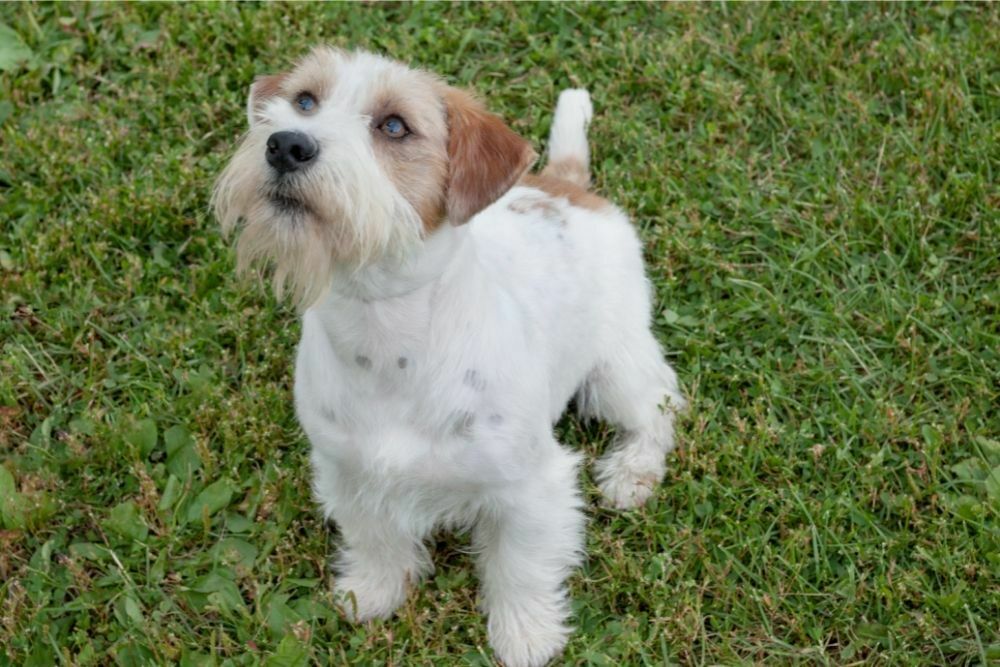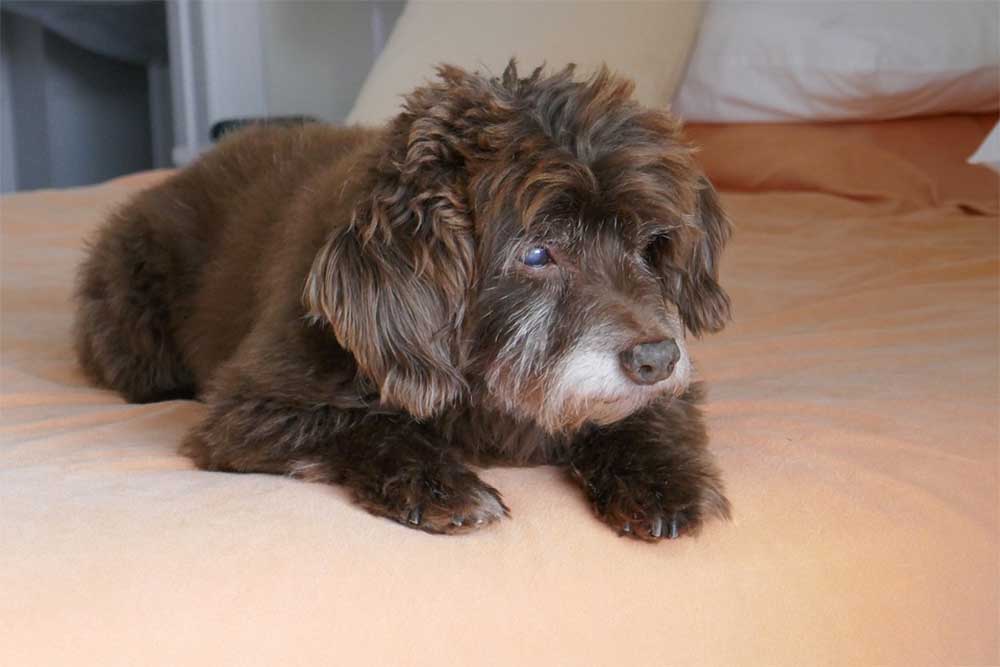
As your dog ages, you may notice some cloudiness in its eyes. This can be a normal and expected occurrence in senior dogs. Seniors dogs are a lot more vulnerable to eye conditions so you must make sure that you don’t ignore the issue, and consult a vet before the issue worsens into a more serious disease.
A common age-related eye condition is Nuclear Sclerosis. It can affect many breeds and will typically affect both eyes at the same time. Essentially, as their lens grows, it develops rings. Typically the diameter of these rings will increase, however, as your dog gets older these rings will become compressed until their eyes eventually appear cloudy. This condition does not hinder their vision and therefore does not require treatment.
Dry eye can often make your dog’s lens look rather cloudy. In severe cases, your dog may experience corneal ulceration or scarring. This condition occurs when your dog’s body is unable to produce enough tears. Due to the lack of lubrication, the surface of their eyes can become dry and irritated and in the worst case, their eyes can appear cloudy and dull. This condition can typically be treated with eye medication.
There are many issues relating to the cornea that may cause your dog’s eyes to develop a cloudy appearance. Ulcers typically occur as a result of trauma and can be painful if they are not treated straight away. They will often cause fluid to collect too hence why your dog’s eye may seem as though it has a cloud-like coating.
Corneal dystrophy presents another possible cause of cloudy eyes. This is a condition that is typically inherited and is identified by the following three categories; epithelial, stromal, and endothelial. There are specific treatments available for this issue, though in severe cases, the eye may require surgery.
Similar to people, dogs can develop cataracts in their eyes. This condition may occur suddenly or it may develop gradually over some time. A cataract is a cloudy layer that forms within the crystalline lens. It can be inherited or caused by trauma or disease.
A cataract isn’t all one uniform size, whilst some can be as small as a dot, others can cover the whole lens. As it develops you will likely notice that it becomes thicker. Whilst some older dogs can adjust to cataracts quite well, in other cases, it can lead to blindness if it is ignored. Because of this, you should get your dog’s eyes checked out if you suspect cataracts.
Anterior Uveitis is a condition concerning the inflammation of the uvea; a section of a dog’s eye that is composed of the iris, ciliary body, and choroid. This is a serious and painful condition that can lead to cataracts and irreversible blindness if it isn’t treated. Some common causes of this condition include an infection, a disease, high blood pressure, trauma, parasites, or cancer. It is possible to resolve this condition if it is treated correctly.

Can my dog see with cloudy eyes?
This depends on what is causing the cloudiness and the severity of the condition. As Nuclear Sclerosis typically occurs as a natural part of the aging process, it isn’t known to have a detrimental effect on eyesight and vision.
More serious conditions, e.g cataracts, and anterior uveitis can diminish your dog’s vision leading to blindness if ignored and not given the necessary treatment. It is likely that many dogs with cataracts will still be able to differentiate between light and dark.
Slso, dogs with cataracts are likely to get blinder as the cataracts get thicker. However, you will find that some dog’s only experience slight vision loss and actually cope and adjust very well to the difference in their sight.
There are several signs which may indicate that your dog’s eyesight is deteriorating. Your dog may begin bumping into noticeable objects or they may experience difficulties when attempting to locate their food source or toys. You may also notice that when looking in your direction they do not appear to be looking directly at you.
It is worth noting that some cases can escalate with serious repercussions if they are not treated. You will find that some conditions can become very serious in a matter of days, hence why it is recommended that you consult the vet as soon as you notice a potential problem.
What does glaucoma look like in dogs?
Glaucoma is a serious and painful condition that can affect dogs. This condition causes a high build-up of fluid and intraocular pressure in the eye. If left untreated, it can permanently damage their optic nerve or it may even result in vision loss.
Glaucoma is identified by the two following categories; primary glaucoma and secondary glaucoma. Whilst primary glaucoma is typically an inherited condition, secondary glaucoma occurs as a result of another eye condition such as bleeding or swelling.
Dogs suffering from sudden glaucoma are likely to have a sluggish interaction with light and a weaker blink response. Dogs with chronic glaucoma are unlikely to respond to light and they are likely to lack a blink response too.
There are many signs which may indicate that your dog has glaucoma, this includes a cloudy cornea, redness and irritation, different sized pupils, and a bulge in their eye.
Furthermore, their eyes may begin to produce discharge. Aside from the physical signs, you may also notice changes in your dog’s behavior. For example, they may be much more lethargic with an increased interest in sleeping. Your dog may also lack interest in playing and interacting with you.
Often glaucoma can be difficult to detect in dogs because when a dog loses sight in one eye, they will typically depend on their other eye so they may not show visible signs that their eyesight is deteriorating unless glaucoma affects both of their eyes.
Certain breeds are more likely to suffer from glaucoma than others and female dogs are also thought to be more susceptible to developing this condition in comparison to males. If you suspect that your dog has glaucoma you will need to take them to a vet who will need to be able to diagnose the problem.
